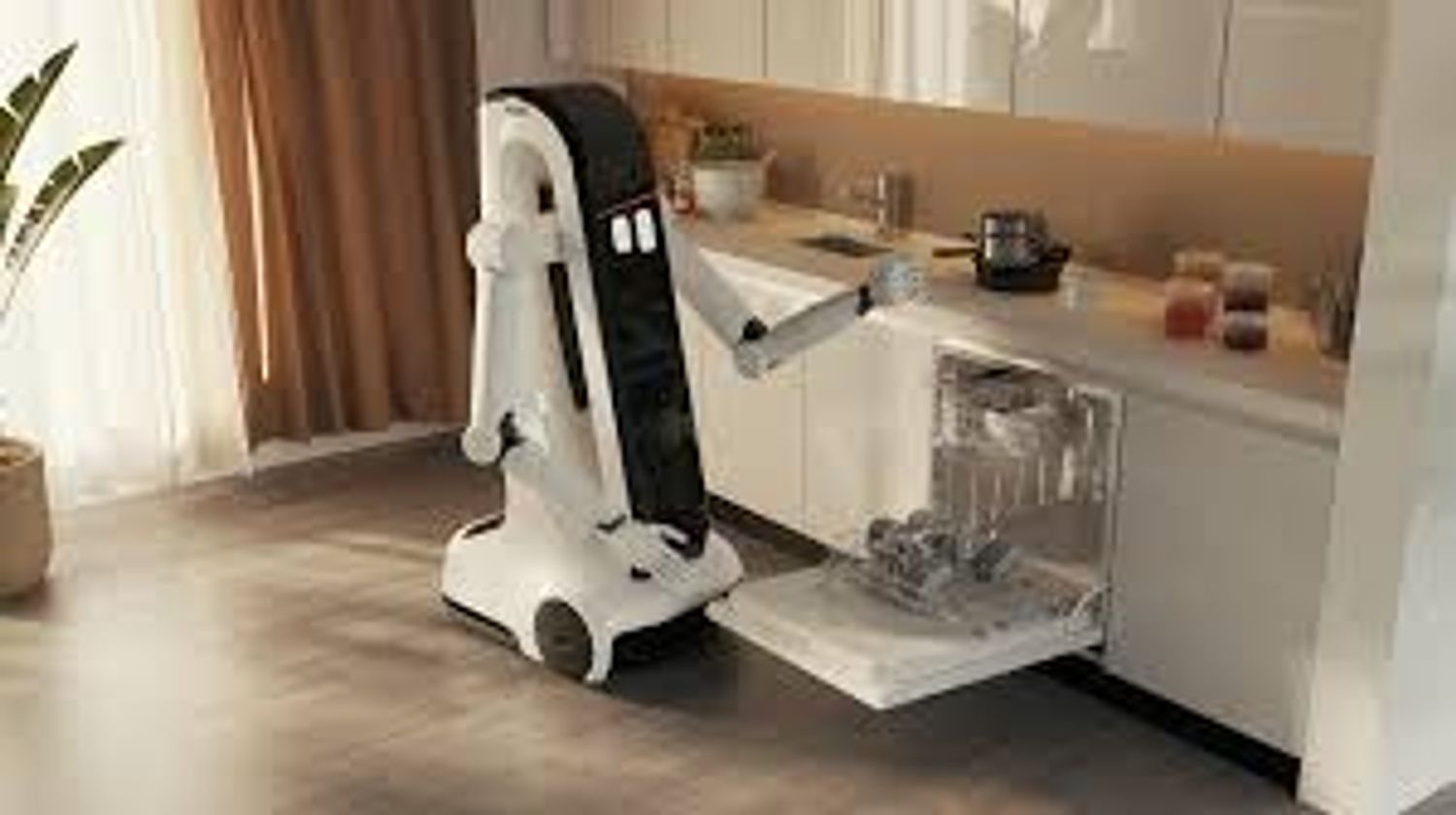MiPA
MiPA by NEURA Robotics is an AI-powered personal assistant robot designed for home, care, and workplace environments. It features advanced sensors including force-torque, LiDAR, cameras, and ultrasonic sensors, enabling safe, touchless human detection and real-time obstacle avoidance. MiPA supports multi-language voice commands, gesture control, and customizable touch interfaces. Its modular design allows for flexible expansion with add-ons tailored to specific tasks such as light logistics, item transport, and care assistance. Optimized primarily for indoor use, MiPA adapts to dynamic environments and learns new tasks autonomously, making it suitable for both personal and commercial applications.
Robot Specifications
- Key FeaturesKey Features
- Top Features
- Other Features
Carrying Capacity
10 kg per arm
Speed
1.5 km/h (0.42 m/s)
Dimensions
120 cm x 40 cm x 60 cm
Weight
45 kg (Estimated average)
Battery Pack
Estimated 1.5 kWh lithium-ion battery pack
Available Colours
White, light gray, customizable panels for branding
Runtime
6 hours (Estimated typical for indoor assistant robots)
Connectivity
Wi-Fi, Bluetooth, SG (Smart Grid), Matter protocol support
Battery Life
3-5 years (typical lithium-ion battery lifespan in robotics)
Warranty Info
2 years limited warranty covering hardware and software defects
Charging Time
Approximately 2-3 hours (estimated from similar battery systems)
Available Countries
Available worldwide with focus on Europe, North America, and Asia markets
Compatible Devices
Alexa, Google Home, and other smart home assistants (via cloud integration)
App Integration
Compatible with NEURA Robotics app, supports third-party integration via APIs
Cloud Integration
Yes; supports cloud services for data analytics, remote monitoring, and AI model updates
User Interface
Touch screen display, voice interaction, gesture control, physical buttons for emergency and manual override
Sensors
RGB cameras, webcam, LiDAR, ultrasonic sensors, infrared sensors, force-torque sensors, microphone array, temperature sensor, humidity sensor, IMU, gyroscope
Review Videos
Watch expert reviews and demonstrations of this robot
More Robots from NEURA Robotics
Explore other robots from this manufacturer
More Humanoid Robots
Discover more robots in the same category

K2 Bumblebee
humanoid

CLOi GuideBot
humanoid

Star1
humanoid

Unitree G1
humanoid

Atlas (Electric Atlas, 2025)
humanoid

ALLEX
humanoid

Henry
humanoid

T1 Humanoid
humanoid

K2 Bumblebee
humanoid

CLOi GuideBot
humanoid

Star1
humanoid

Unitree G1
humanoid

Atlas (Electric Atlas, 2025)
humanoid

ALLEX
humanoid

Henry
humanoid

T1 Humanoid
humanoid

K2 Bumblebee
humanoid

CLOi GuideBot
humanoid

Star1
humanoid

Unitree G1
humanoid

Atlas (Electric Atlas, 2025)
humanoid

ALLEX
humanoid

Henry
humanoid

T1 Humanoid
humanoid

K2 Bumblebee
humanoid

CLOi GuideBot
humanoid

Star1
humanoid

Unitree G1
humanoid

Atlas (Electric Atlas, 2025)
humanoid

ALLEX
humanoid

Henry
humanoid

T1 Humanoid
humanoid

K2 Bumblebee
humanoid

CLOi GuideBot
humanoid

Star1
humanoid

Unitree G1
humanoid

Atlas (Electric Atlas, 2025)
humanoid

ALLEX
humanoid

Henry
humanoid

T1 Humanoid
humanoid
Robots From Other Categories
Discover complementary robots from different categories that work well together

DJI Air 4

DJI Mini 5 Pro

DJI Avata 3

DJI Neo Fly More Combo

Ecovacs Deebot N9+

Narwal Freo Z Ultra

Xiaomi Robot Vacuum Cleaner X10

Roborock Q7 Max

DJI Air 4

DJI Mini 5 Pro

DJI Avata 3

DJI Neo Fly More Combo

Ecovacs Deebot N9+

Narwal Freo Z Ultra

Xiaomi Robot Vacuum Cleaner X10

Roborock Q7 Max

DJI Air 4

DJI Mini 5 Pro

DJI Avata 3

DJI Neo Fly More Combo

Ecovacs Deebot N9+

Narwal Freo Z Ultra

Xiaomi Robot Vacuum Cleaner X10

Roborock Q7 Max

DJI Air 4

DJI Mini 5 Pro

DJI Avata 3

DJI Neo Fly More Combo

Ecovacs Deebot N9+

Narwal Freo Z Ultra

Xiaomi Robot Vacuum Cleaner X10

Roborock Q7 Max

DJI Air 4

DJI Mini 5 Pro

DJI Avata 3

DJI Neo Fly More Combo

Ecovacs Deebot N9+

Narwal Freo Z Ultra

Xiaomi Robot Vacuum Cleaner X10

Roborock Q7 Max
Frequently Asked Questions
Get answers to common questions about this robot
Q1. What is MiPA by NEURA Robotics?
MiPA is a smart personal assistant robot designed for repetitive, tiring, or unsafe tasks, featuring modular hardware and adaptive AI for versatile use in homes and enterprises.
Q2. When was MiPA launched?
MiPA was launched worldwide in mid-2025 as part of NEURA Robotics' new product lineup.
Share Your Feedback
Help us improve! Share your thoughts, suggestions, or report any issues.
No login required!

